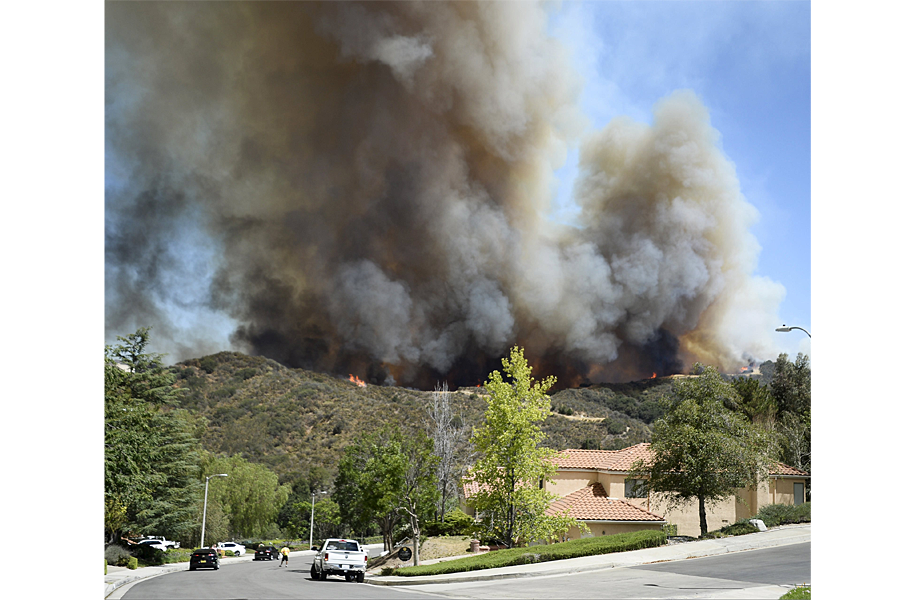California wildfires: What to do in a forest fire
Loading...
A combination of strong winds and severe drought conditions led blazes to grow to 21,000 acres in Northern California, in the San Bernardino Mountains, by Wednesday evening, leading residents of one summer camp to evacuate.
A historic four-year drought has fueled large wildfires in the state, and experts are predicting that the 2015 season could be particularly severe, according to the L.A. Times. With that in mind, now may be a good time to review safety procedures in the event of a wildfire.
Here’s what to do if caught in a wildfire:
- Don't try to outrun the blaze. Instead, look for a body of water such as a pond or river to crouch in.
- If there is no water nearby, find a depressed, cleared area with little vegetation, lie low to the ground, and cover your body with wet clothing, a blanket, or soil. Stay low and covered until the fire passes.
- Protect your lungs by breathing air closest to the ground, through a moist cloth, if possible, to avoid inhaling smoke.
Separate fires north of Los Angeles began Wednesday afternoon and caused 1,000 people to evacuate their homes in the Santa Clarita neighborhood of Newhall. Several highways were closed and four helicopters and 450 firefighters stood at the ready as the aircraft poured water on the fire. The cause of the blaze is yet to be determined but an investigation is underway. By Wednesday night, the blaze remained near Santa Clarita, but majority of this fire has now been reduced to embers and evacuation orders have now been lifted.
If advised to evacuate your home:
- Do so immediately.
- Know your evacuation route ahead of time and prepare an evacuation checklist and emergency supplies.
- Wear protective clothing and footwear to protect yourself from flying sparks and ashes.
- Before You Leave, Prepare Your House
- Remove combustibles, including firewood, yard waste, barbecue grills, and fuel cans, from your yard.
- Close all windows, vents, and doors to prevent a draft.
- Shut off natural gas, propane, or fuel oil supplies.
- Fill any large vessels – pools, hot tubs, garbage cans, or tubs – with water to slow or discourage fire.
Los Angeles County Fire Department public information officer Tony Imbrenda told local news stations that the land conditions were drier than usual for the time of year, noting that these weather conditions were typical of August weather. The cause of the fire is yet unknown and as of Wednesday morning, one firefighter and a jail inmate helping battle the blaze were slightly injured.
Fires have also sprang up in Alaska north of Fairbanks and 250 have been asked to evacuate their homes from the village of Nulato on the western coast. Other fires are currently in Oregon and Washington, but these are largely contained, with federal teams asked for aid for a fire in the forest canopy in Quinault, Washington.
Last year, late-summer fires prompted 1,000 to evacuate their homes from the Bass Lake region of California, becoming one of three major evacuation areas that summer. The state was forced to tap into its reserve funds, after spending its initial budget of $209 million for wildfires, to cover the continuing costs of fighting the blazes.








